Refund Guaranteed
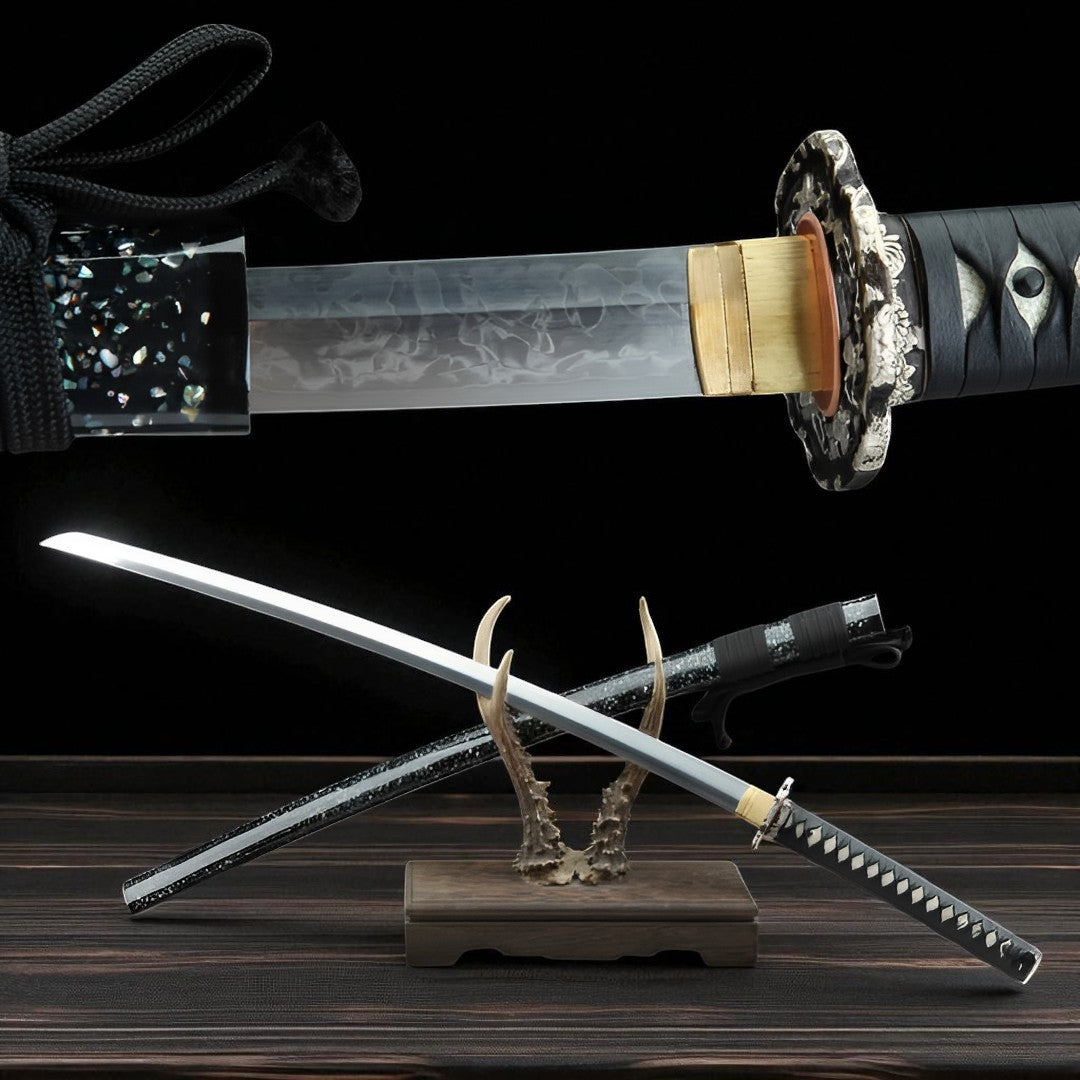
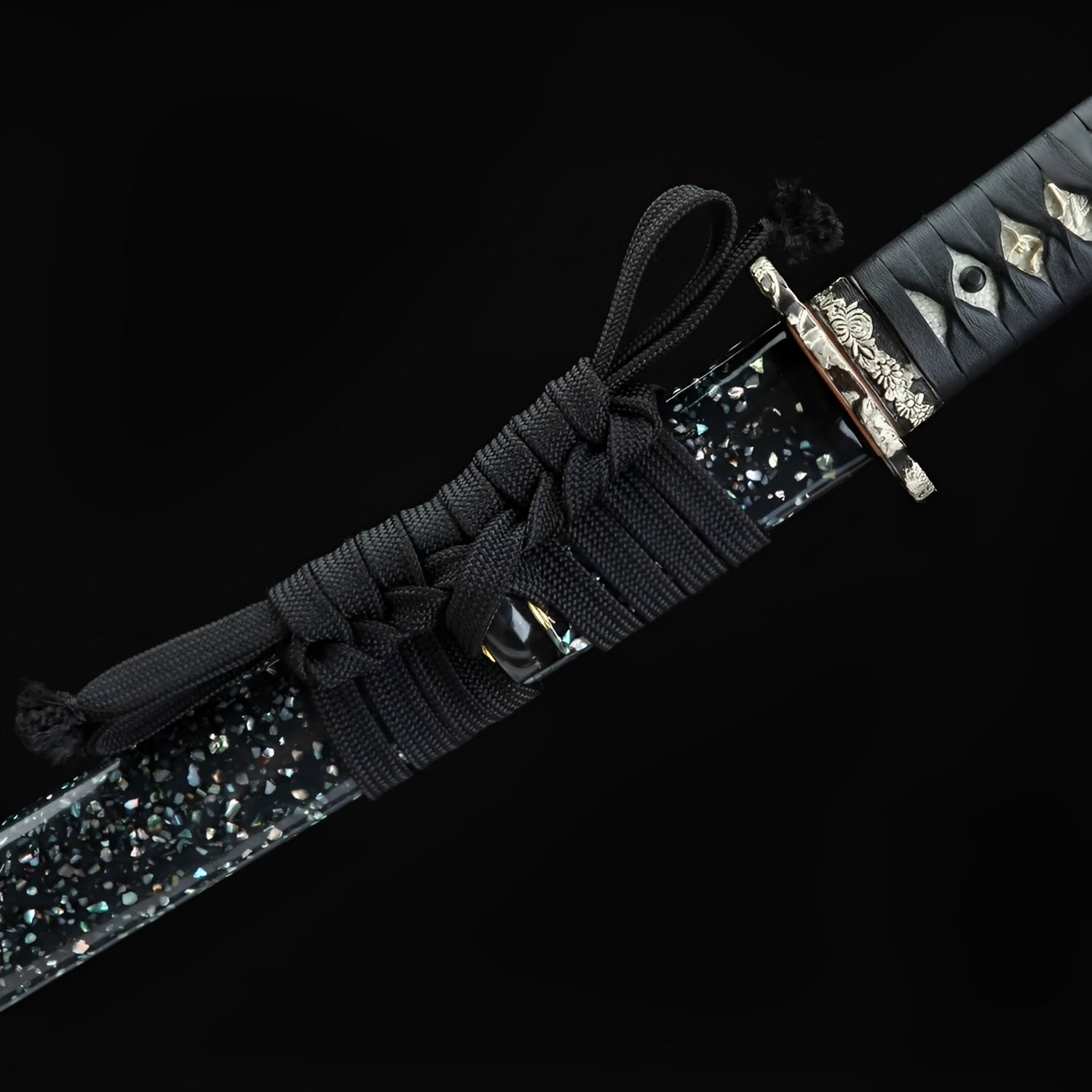
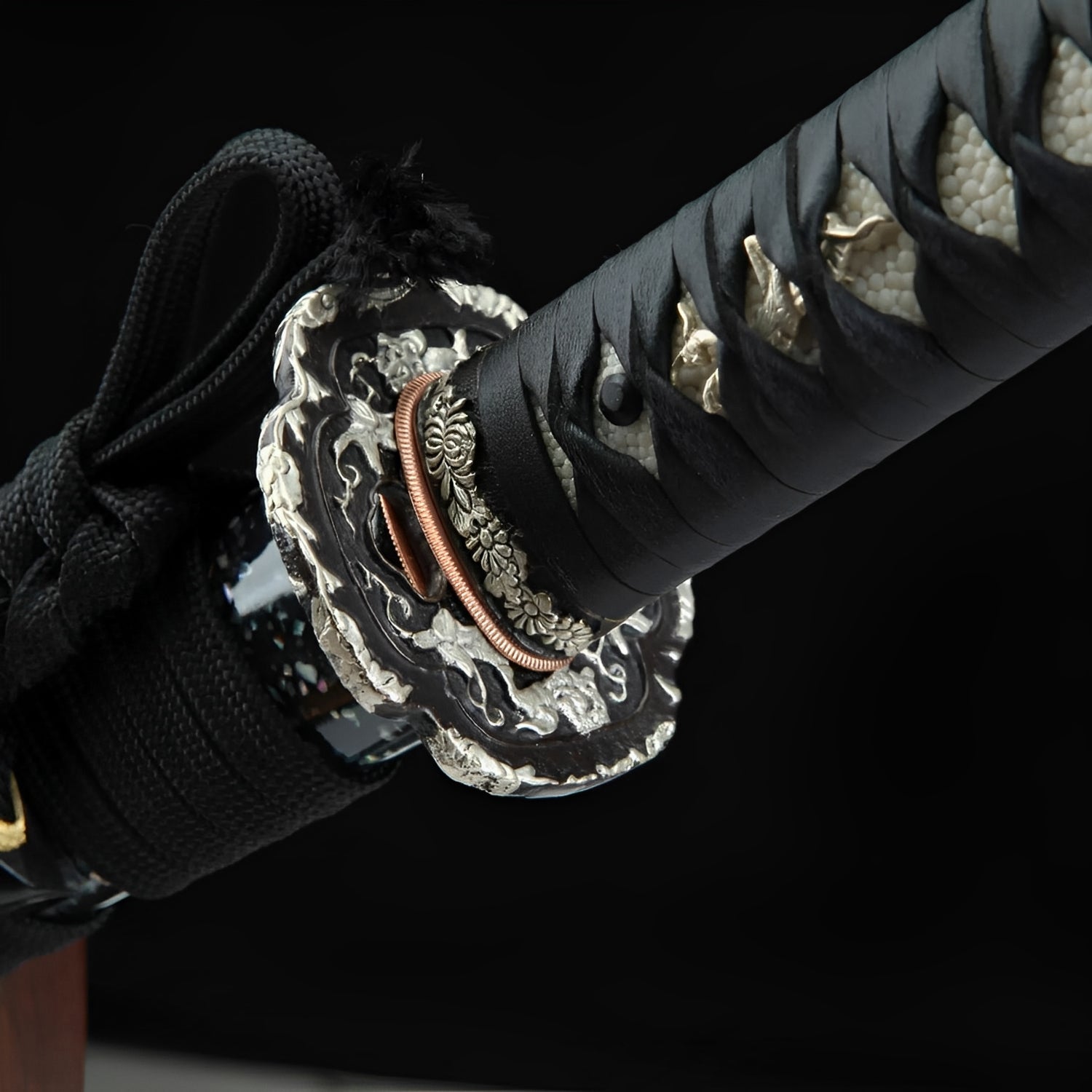
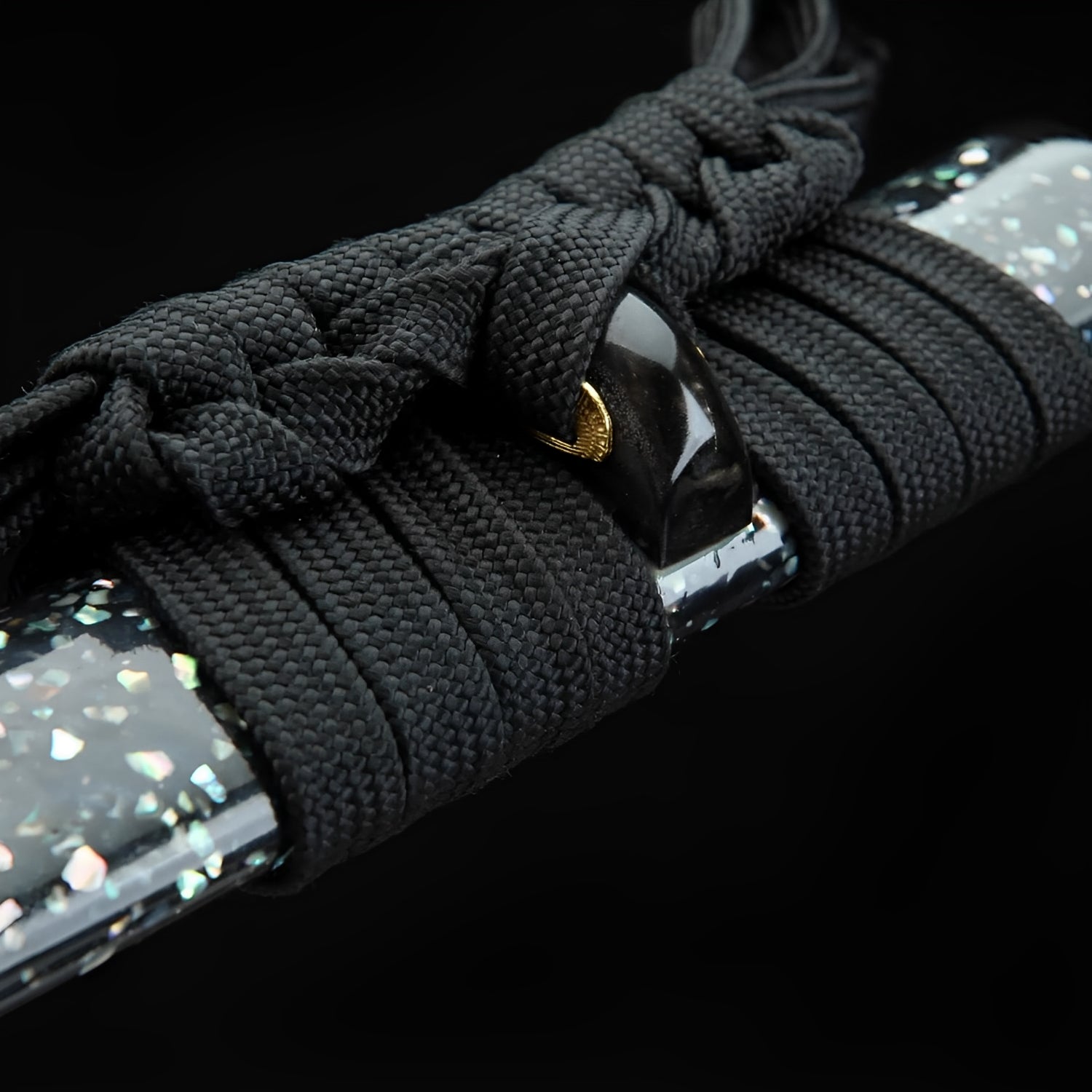
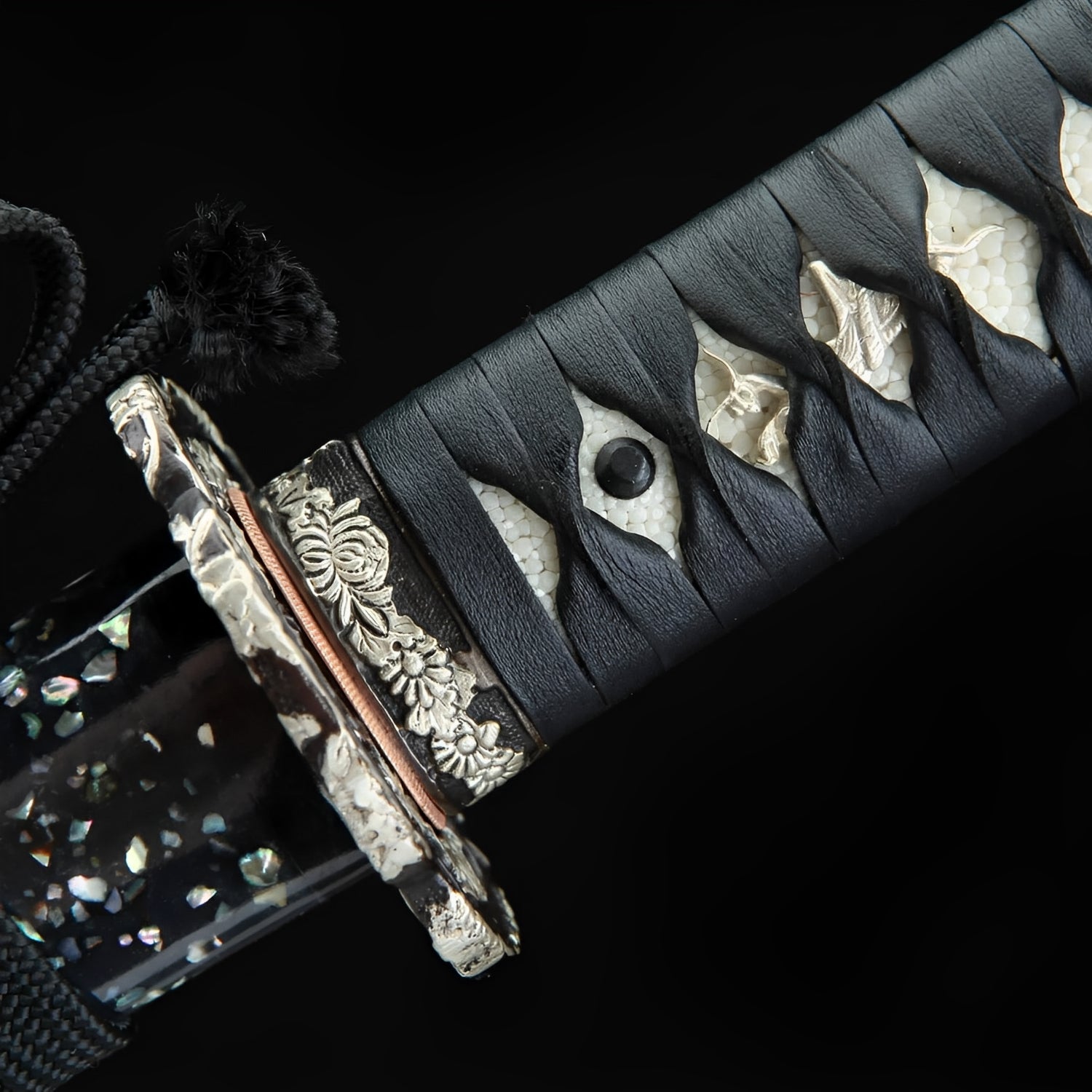
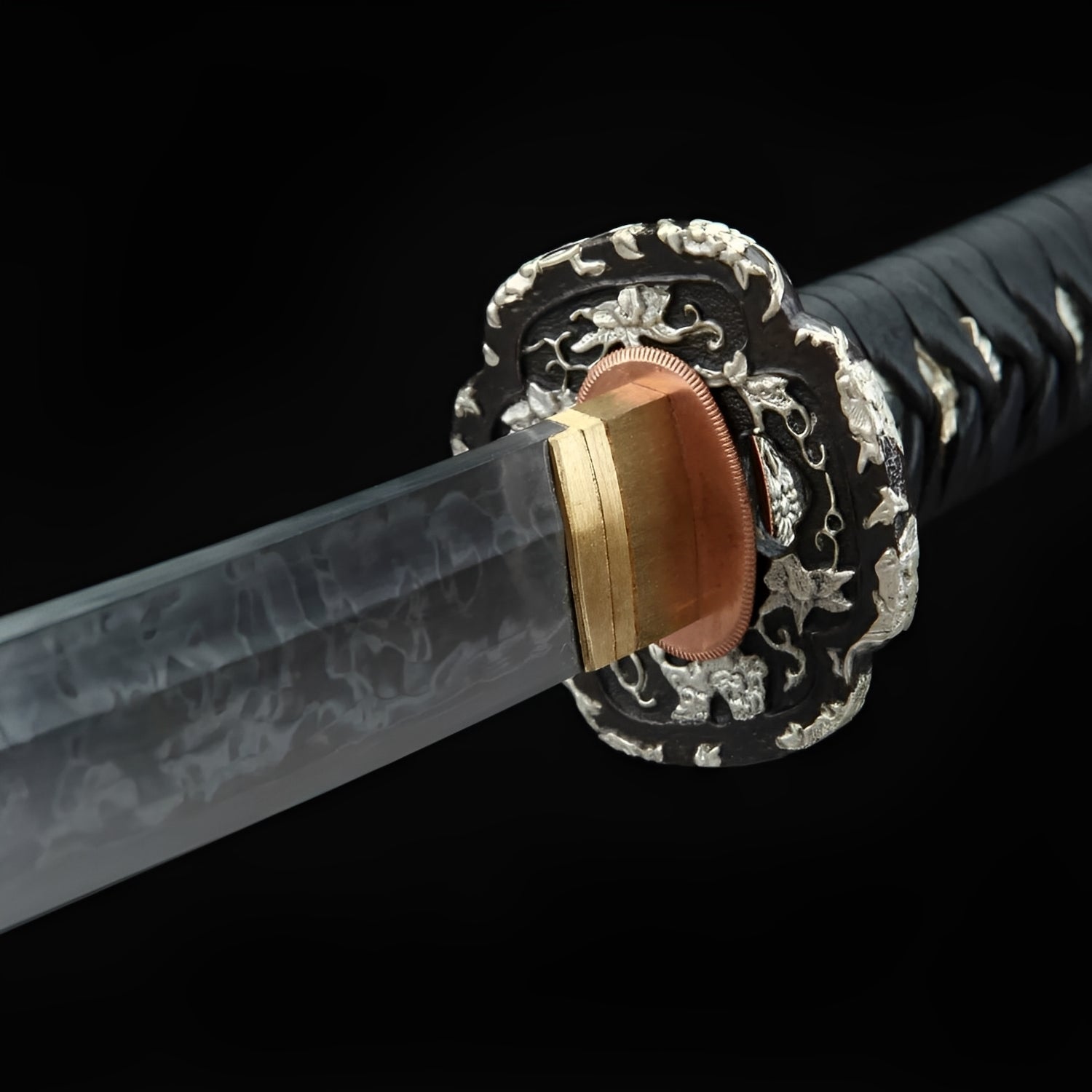
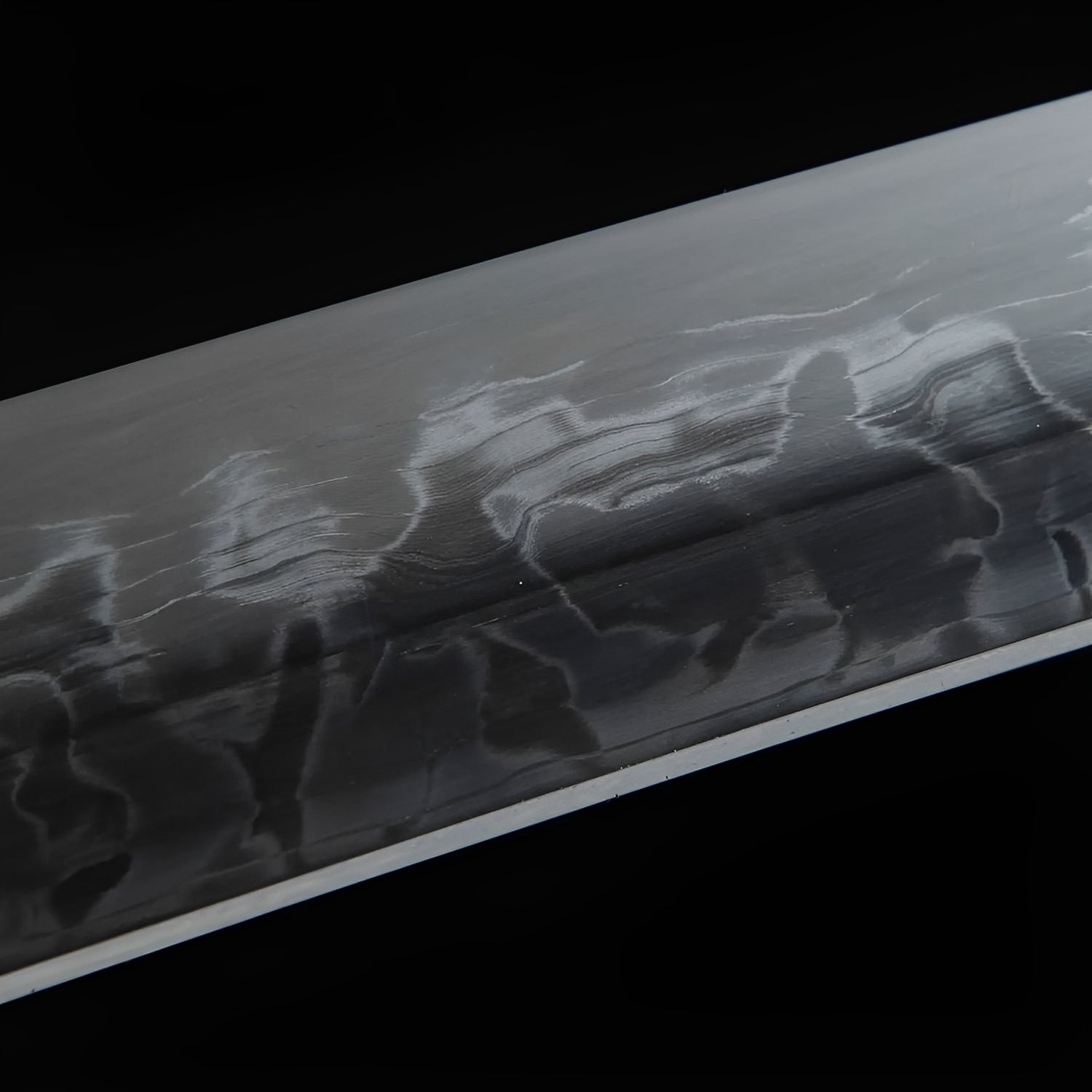
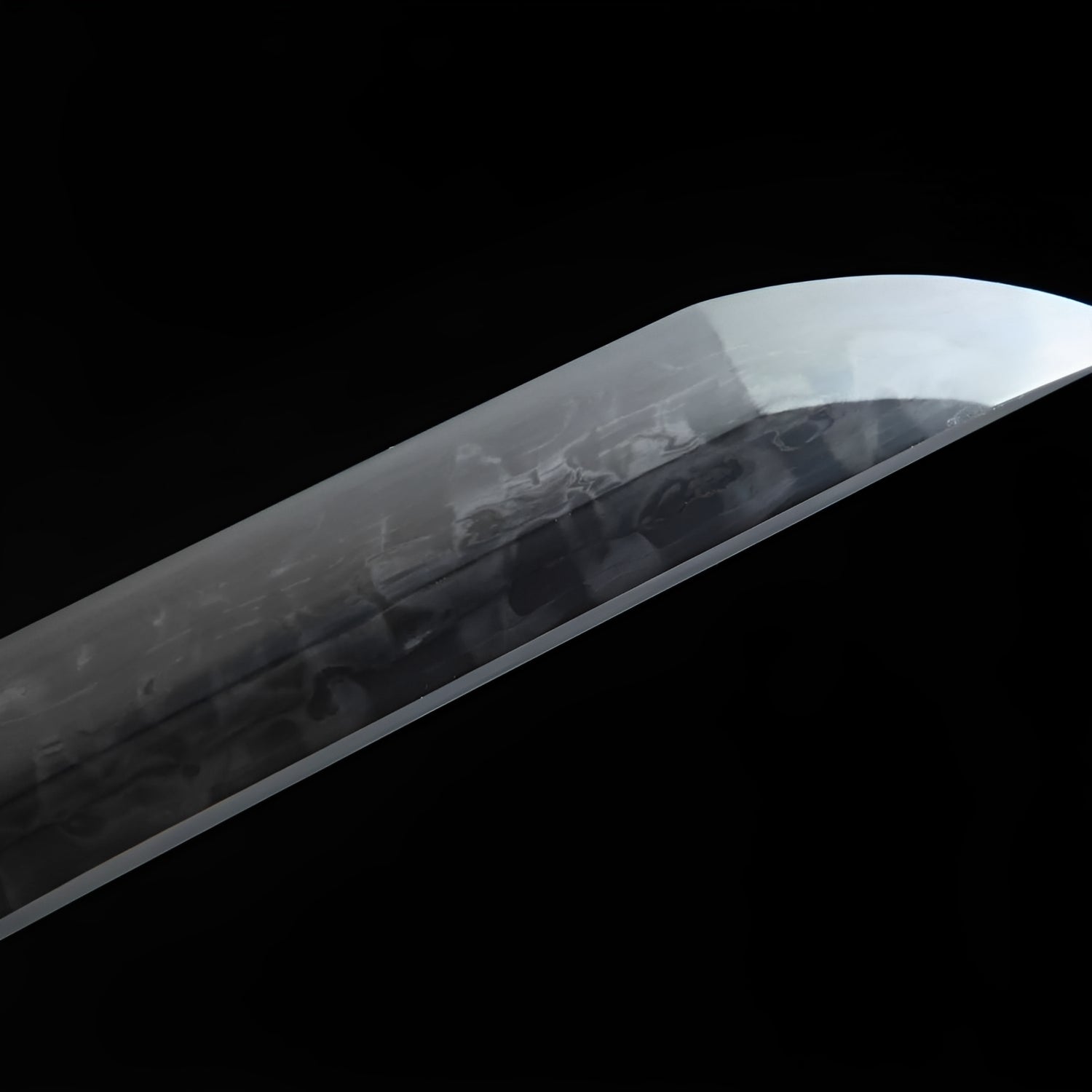
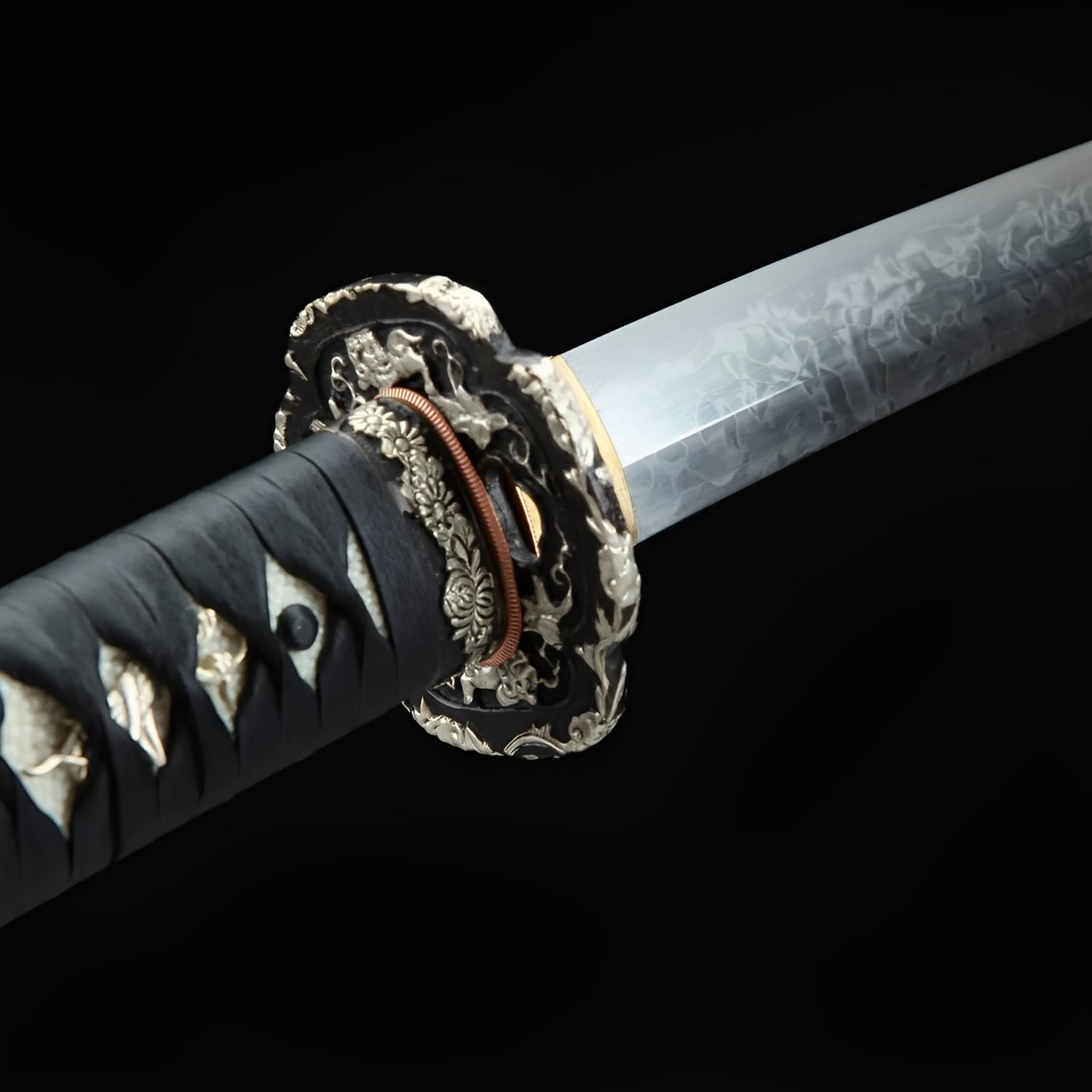
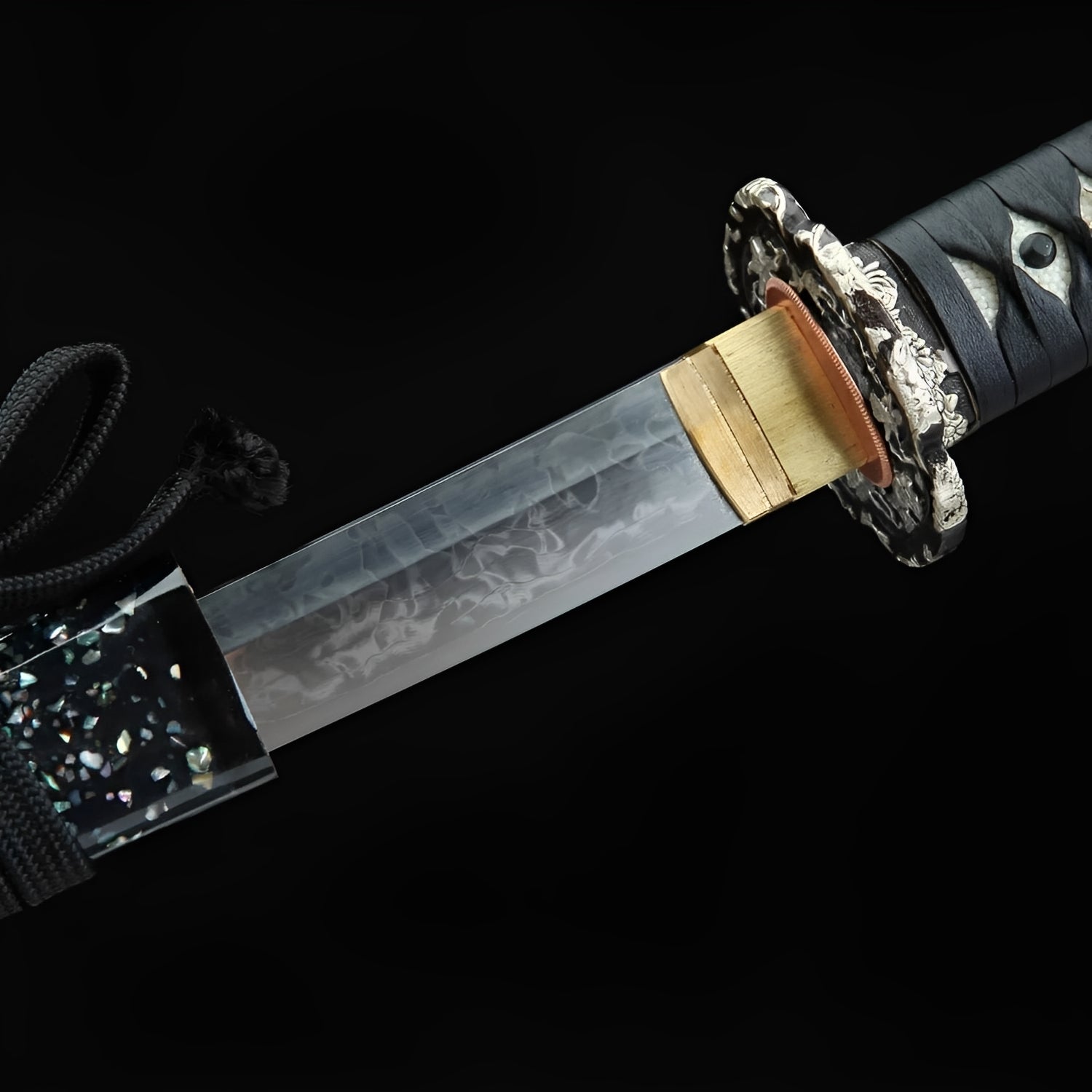
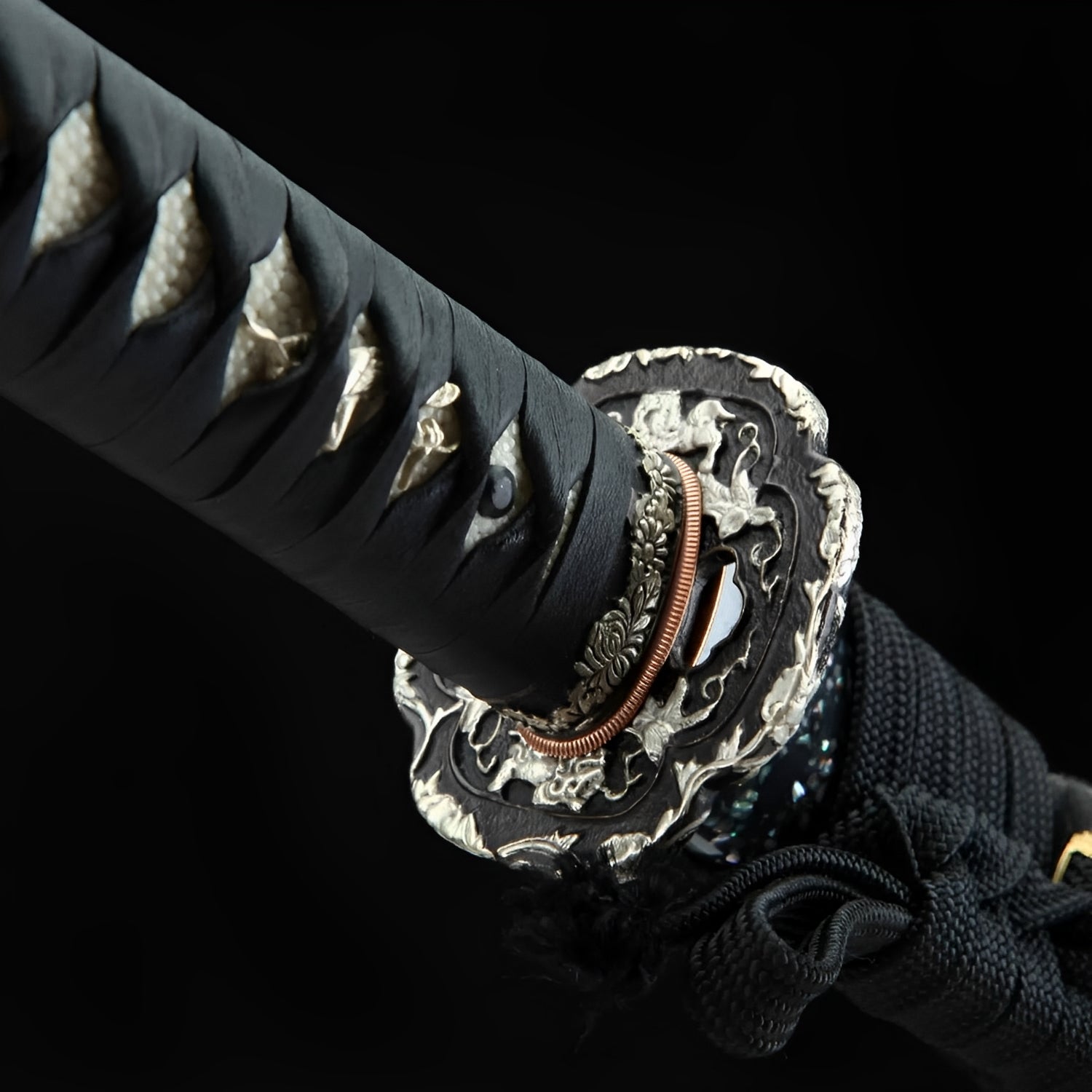
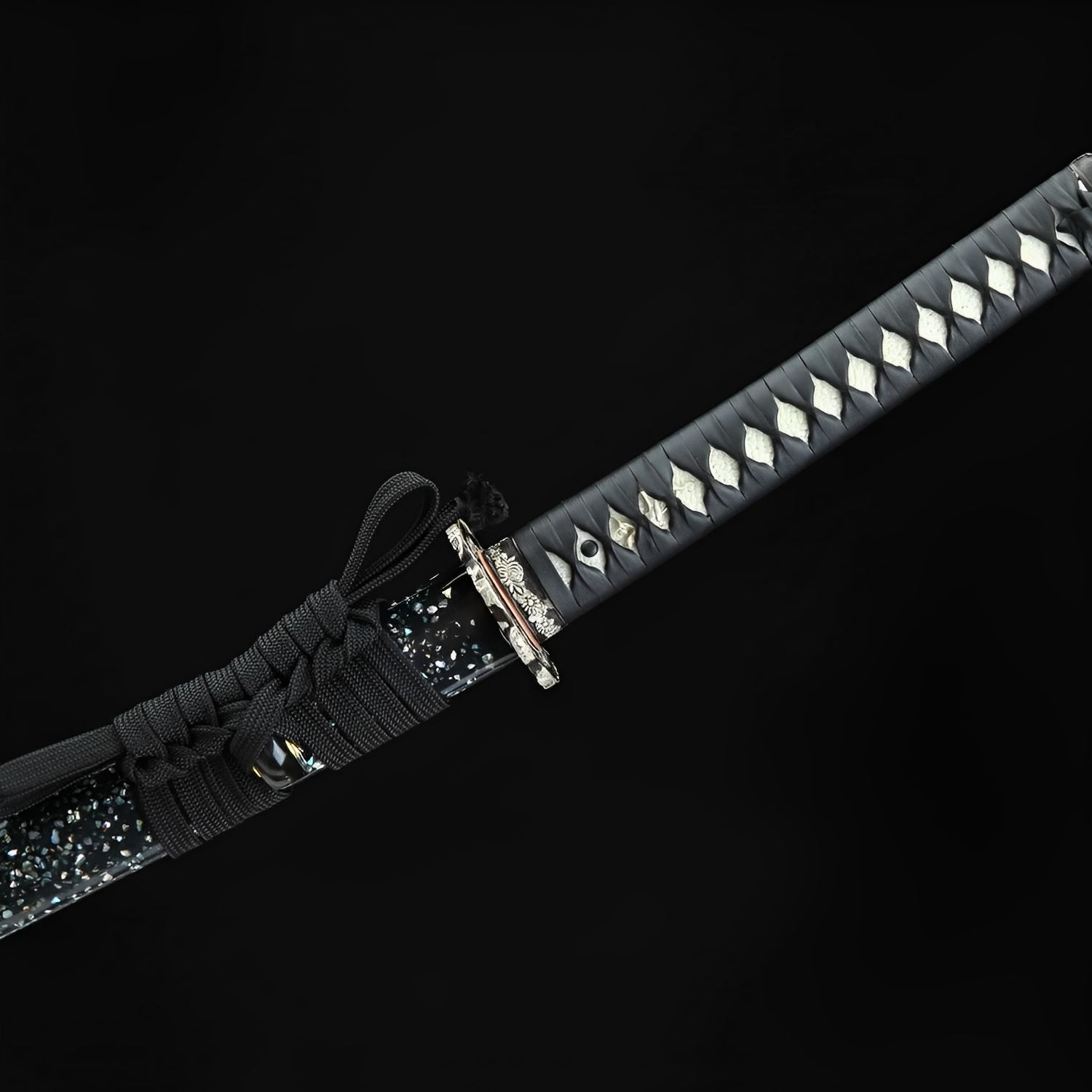
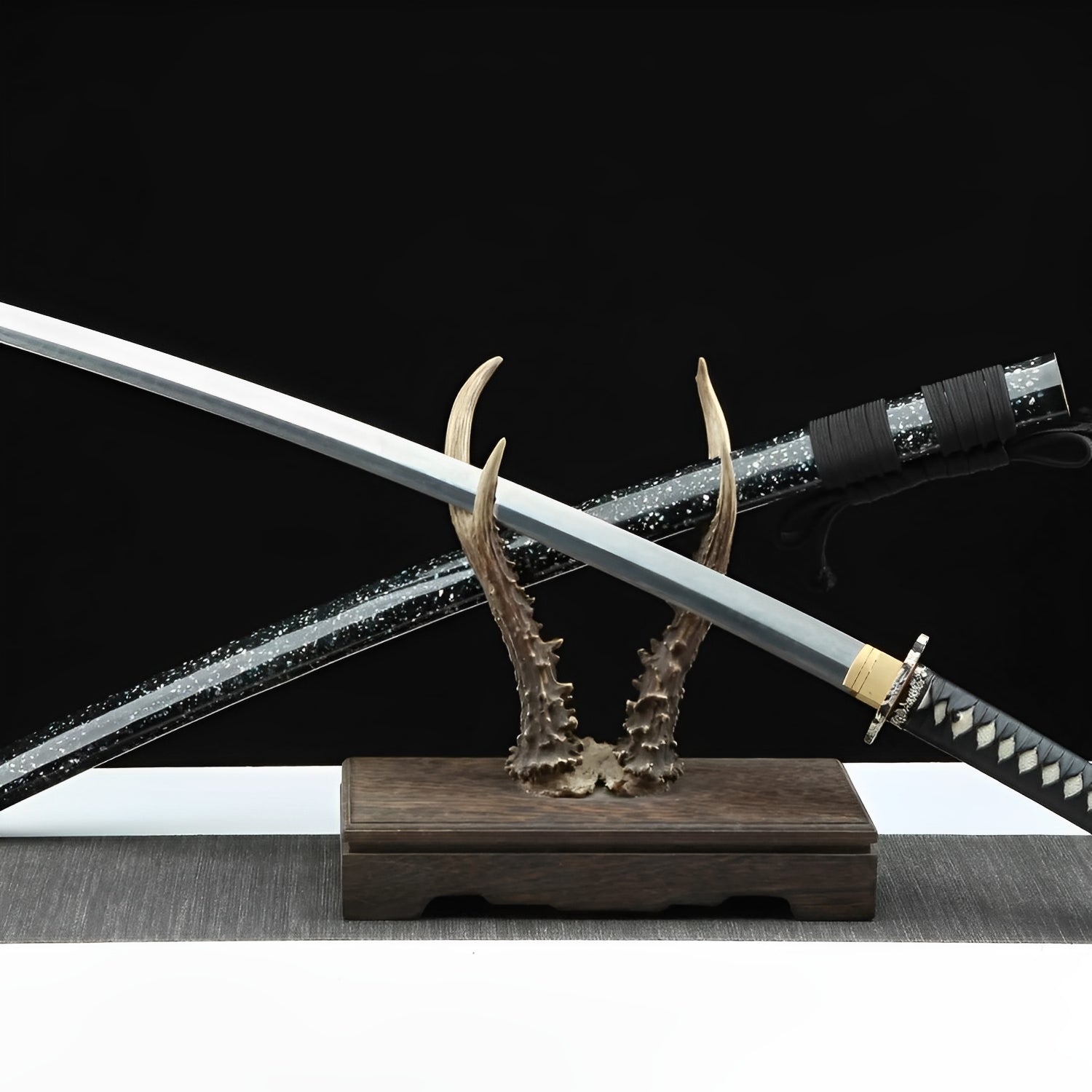
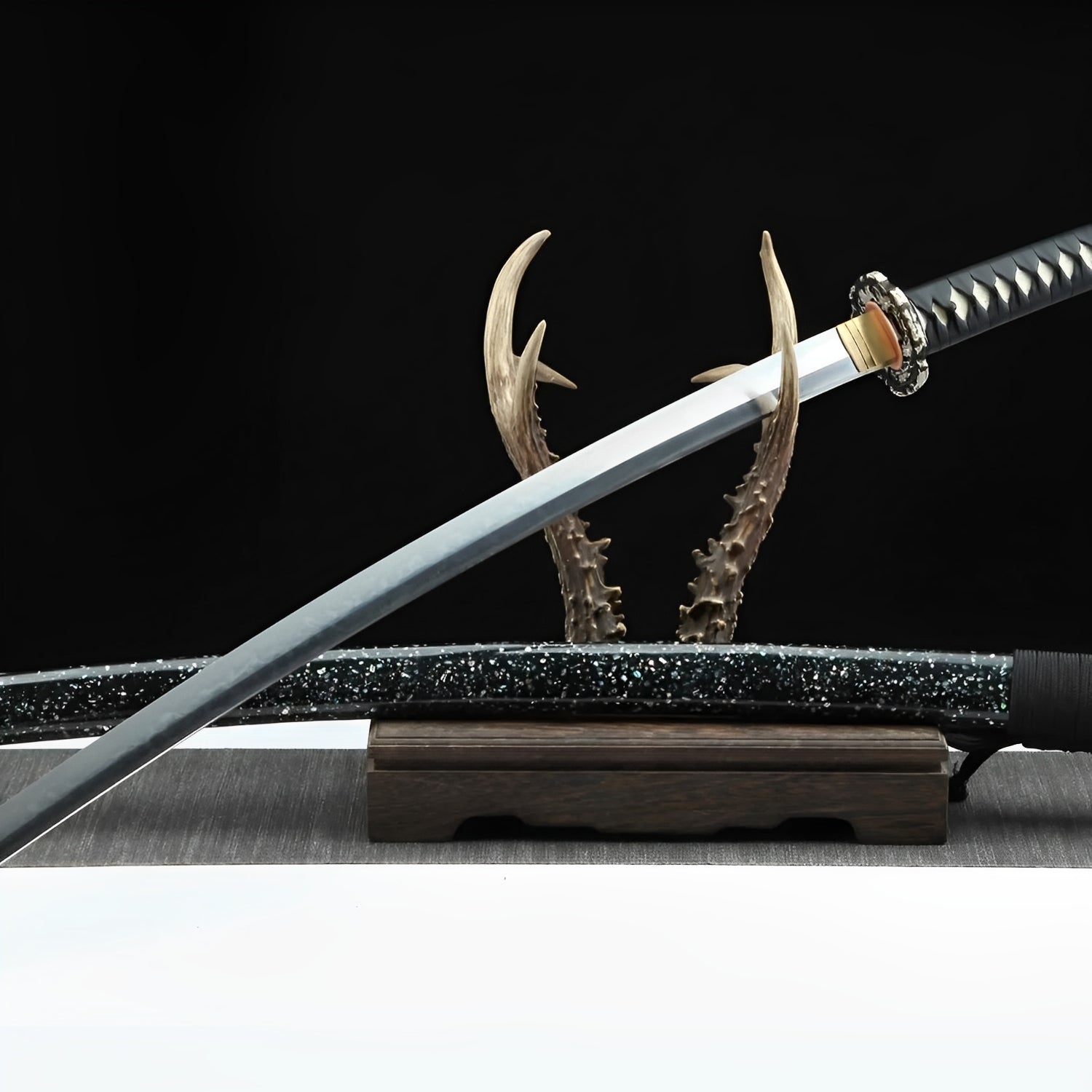
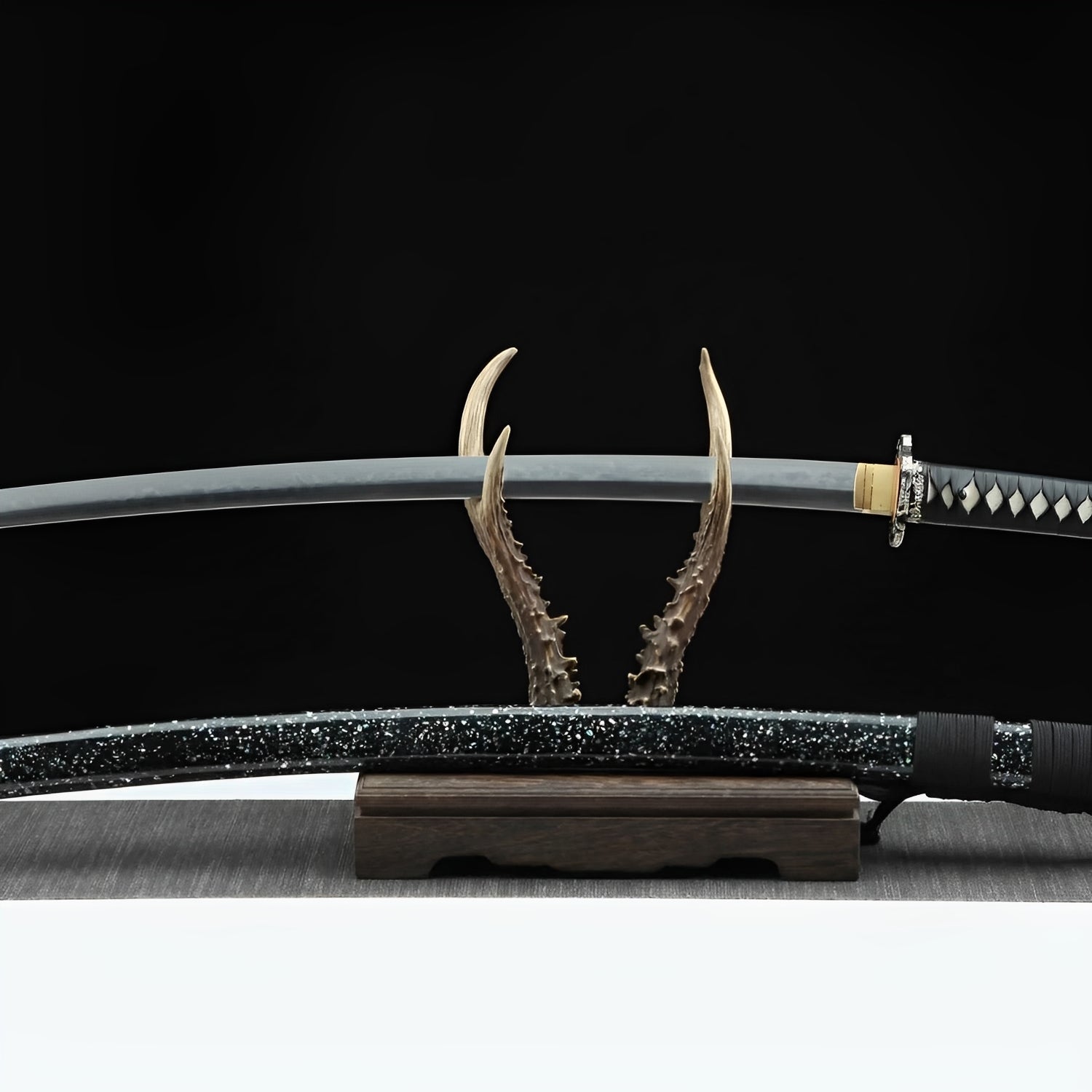
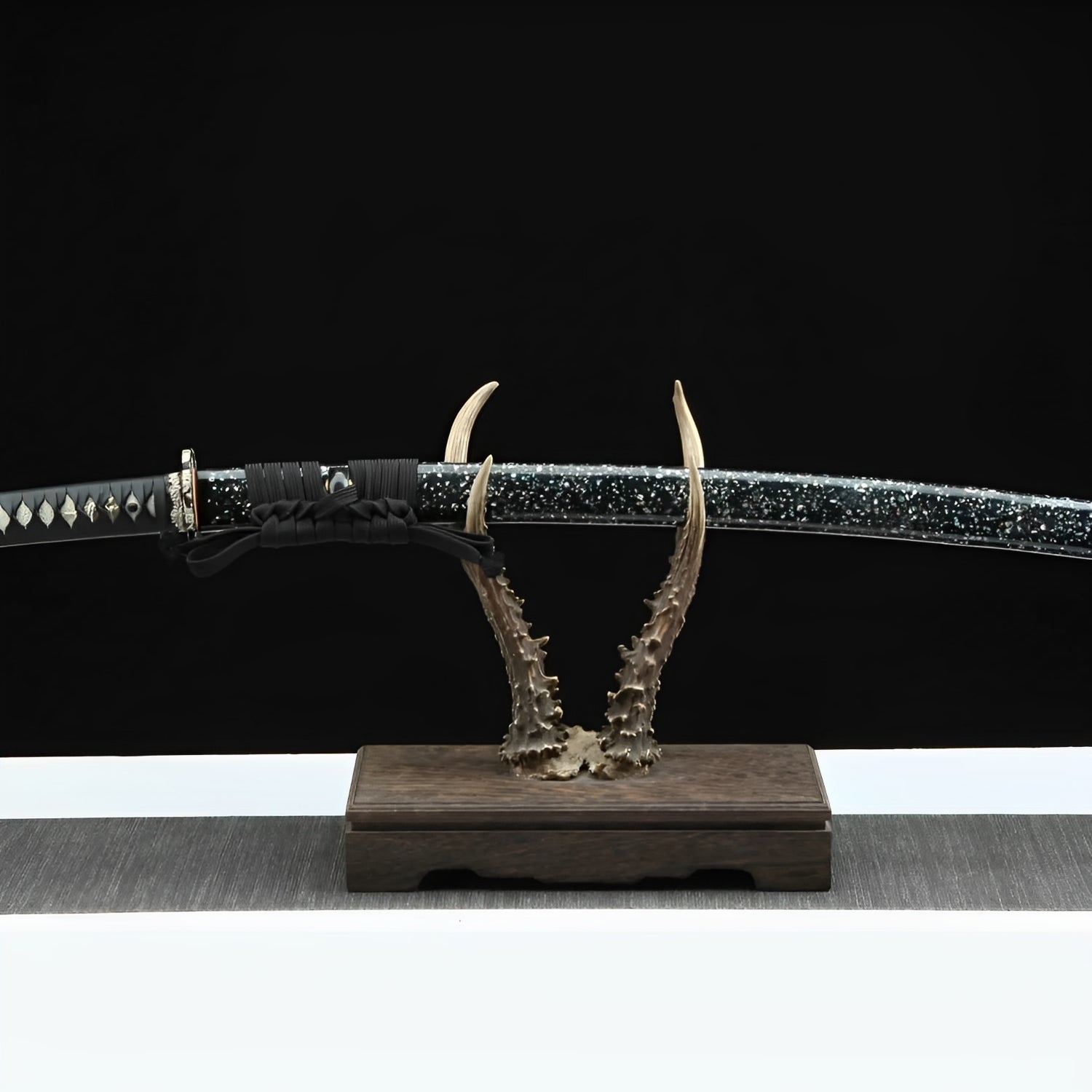
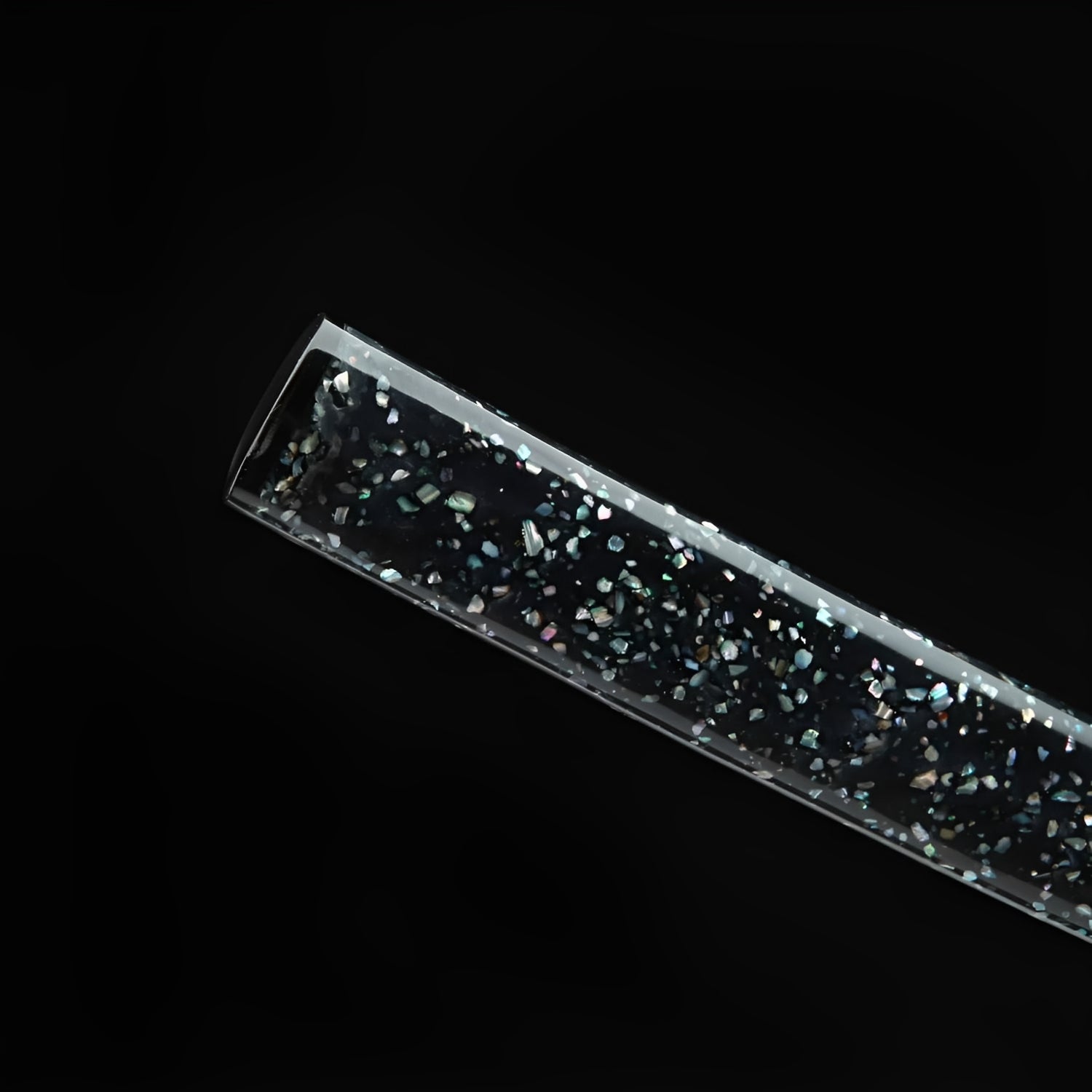
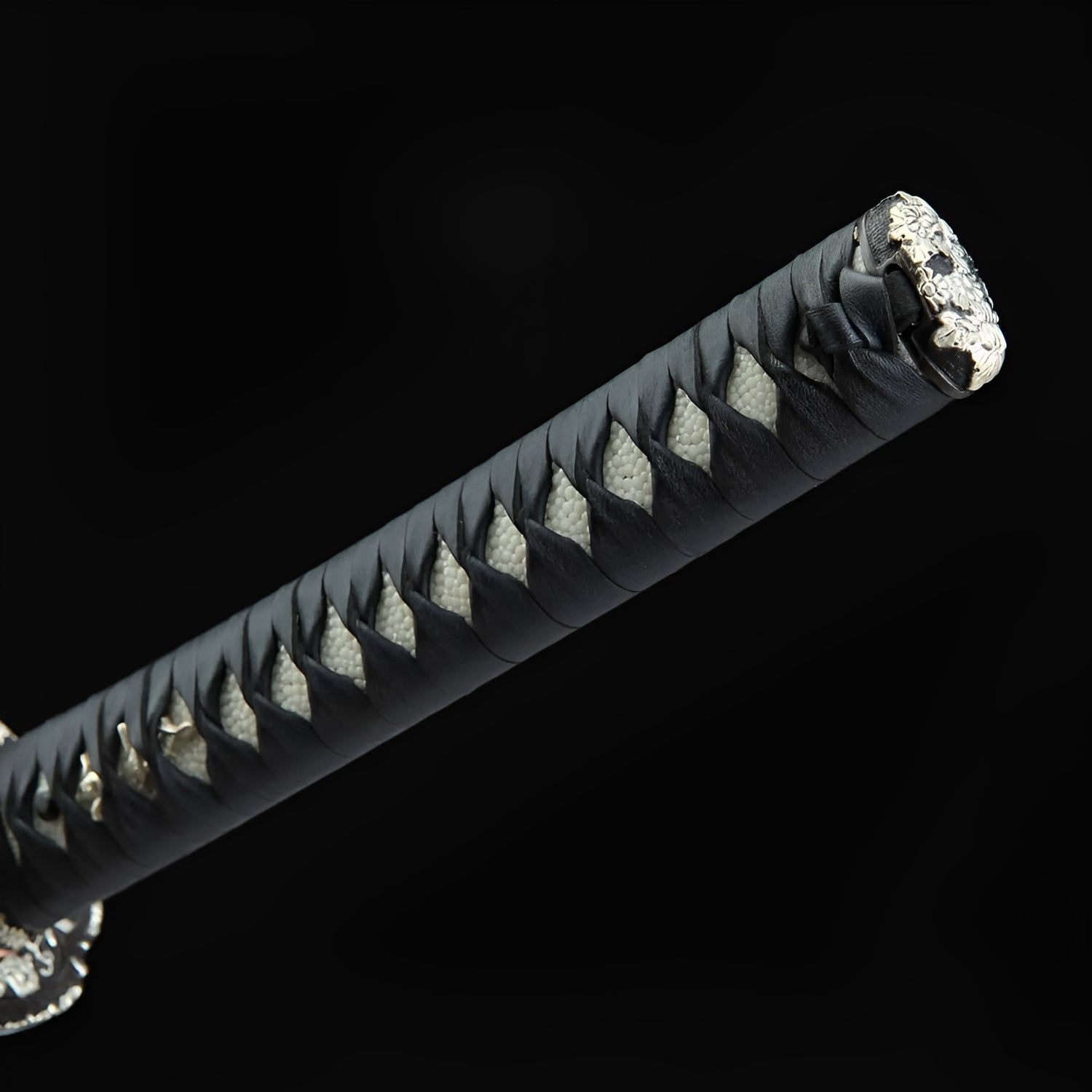
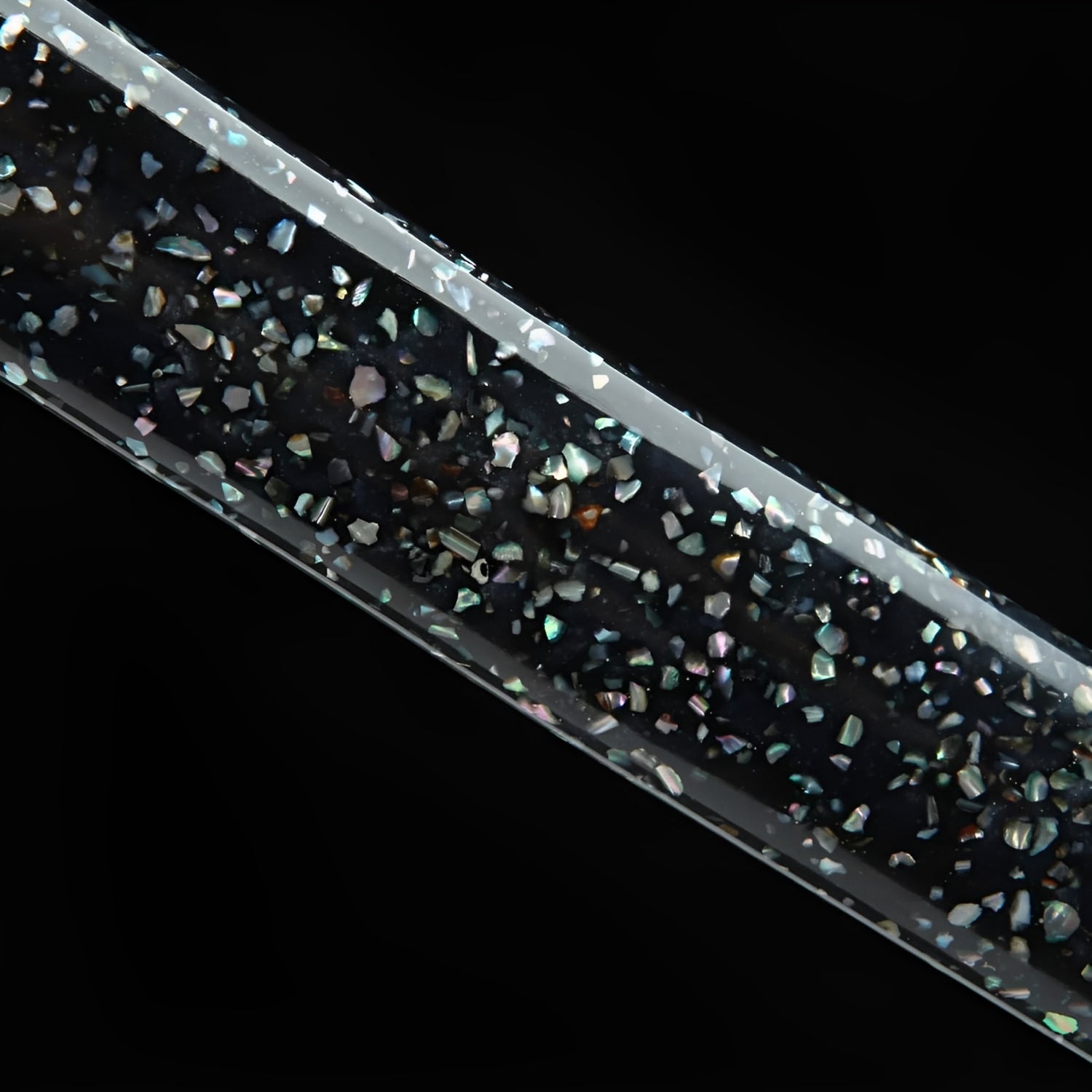
Why choose us
Ships within 48/72h
Forged Blade
Collector Quality
Trusted Globally
Inspired by Japan
Ginkai Katana (T10 Steel & Genuine Hamon HITATSURA) - 霧雷
Popular upgrades
Free Shipping over $250
No Bots, No AI
Refund Guaranteed
Free Shipping over $250
No Bots, No AI
Our team is here to help with any questions or concerns.
We’re always happy to assist you — don’t hesitate to reach out.
Why choose us
Ships within 48/72h
Forged Blade
Collector Quality
Trusted Globally
Inspired by Japan

Ginkai Katana (T10 Steel & Genuine Hamon HITATSURA) - 霧雷
Specifications
- Handcrafted
- SHARP blade
- Blade: Folded T10 Damascus steel, clay-tempered with hamon
- Genuine “Hitatsura” hamon (traditional clay tempering method)
- Silver-plated copper tsuba
- Silver-plated fuchi & menuki
- Thick sageo cord
- “Shell”-style saya with solid wood core
- Tsuka-ITO made of genuine leather
- Bamboo mekugi
- Copper habaki
- Authentic hand-shaped kissaki
- Full tang construction in the handle
- Total length: 105 cm
- Blade length: 72 cm
- Blade width: 3.2 cm
- Blade thickness: 0.7 cm
-
Handle length: 30 cm
Ginkai Katana - Silver Sea Dragon Engraving Masterpiece
Command mythic oceans with Ginkai Katana, blade where artisan becomes storyteller. This narrative dragon-etched masterwork transcends functional metallurgy - silver sea dragon coiling across steel canvas tells ancient legend through engraving requiring jeweler's precision, hitatsura hamon creating storm-tossed waves where dragon swims eternally, ornate tsuba suggesting underwater palace gates, the entire piece embodying philosophy that greatest swords aren't merely tools but visual narratives teaching mythology through metalwork, asking whether you collect weapons for cutting performance or recognize when craftsman elevates blade into gallery-worthy sculpture where every curve, every line, every shadow tells story words cannot.
Silver Sea Dragon Mythology
Ginkai (銀海 - "Silver Sea") invokes specific Japanese mythological concept - the luminous ocean where dragon kings rule underwater palaces, where pearls grant wishes, where mortals venturing beneath waves discover realms existing parallel to surface world, accessible only to those possessing courage confronting what lurks in depths. This mythological realm blade channels centuries of maritime folklore where ocean's mysteries inspired legends about creatures controlling storms, protecting sailors, demanding respect from those daring to traverse their domains.
Specifically, dragon kings (ryujin 竜神) in Japanese mythology governed seas from underwater crystalline palaces (ryugu 竜宮), the dragons embodying both benevolence (protecting worthy sailors) and destruction (summoning tsunamis against those offending them). That dual nature - protective yet dangerous, generous yet demanding - created complex relationship between maritime cultures and ocean deities, the respect-fear combination generating elaborate rituals ensuring safe passage across waters dragon kings claimed as territory.
The dragon engraved on blade specifically tells visual story - coiling posture suggesting motion through water, scales catching light mimicking how sunlight penetrates ocean depths creating shimmering effect, the creature's positioning on blade making it swim when sword moves through air, transforming static decoration into animated narrative. That kinetic quality separates thoughtful engraving from mere decoration - the artist considered how blade moves during use, positioned dragon so motion reveals different aspects creating illusion of living creature rather than frozen image.
Traditional Japanese metalworking elevated engraving (horimono 彫り物) into specialized art form - master engravers (horishi 彫師) spent careers perfecting single subject matter (dragons, deities, landscapes), their work identifiable to connoisseurs through characteristic techniques, their signatures commanding premiums because great engraving required artistic vision beyond mere technical skill. The narrative art blade continues that tradition where weapon becomes canvas, where martial function provides structure enabling artistic expression, where utility and beauty synthesize into object transcending both categories.
Museum curators specifically recognize engraved blades as bridging functional craft and fine art - the sword must maintain cutting geometry and structural integrity while accommodating decoration reducing steel thickness in carved areas, that constraint forcing artist working within tight parameters where mistakes prove catastrophic, the difficulty explaining why exceptional engraving commands prices rivaling the blade itself.
Hitatsura Storm-Tossed Waves
The all-over hitatsura hamon creates this blade's most sophisticated technical-artistic synthesis - the complete blade hardening pattern emerges as crystalline structures suggesting ocean waves churned by dragon king's passage, the metallurgical phenomenon becoming narrative element where heat treatment's functional requirement transforms into aesthetic depicting silver sea's turbulent surface. This storm visualization steel demonstrates supreme mastery where craftsman manipulates physics creating beauty as intentional byproduct rather than decorative accident.
Unlike Kumo Katana (#37) where hitatsura represented technical achievement with cloud philosophy as secondary interpretation, Ginkai's hitatsura specifically designed depicting ocean storms - the crystalline nie and nioi clusters deliberately arranged suggesting foam cresting waves, the pattern's flow mimicking water's perpetual motion, the entire hamon becoming seascape where dragon swims. That intentional narrative use of hitatsura elevates it beyond metallurgical showcase into composed artwork where every element serves unified mythological vision.
Traditional Japanese sword aesthetics specifically celebrated when functional requirements generated beauty - hamon existed for cutting performance but gorgeous patterns emerged as side effect, the philosophy embracing happy accidents where pursuing excellence in one domain spontaneously creates excellence in another. The dual-purpose mastery blade represents that synthesis perfected: the hitatsura serves metallurgical function (complete hardening for durability) while simultaneously serving aesthetic function (depicting turbulent waters completing dragon narrative).
The specific crystalline patterns within hitatsura also create practical benefit for engraved blades - the all-over hardening compensates for steel removed during engraving process, the uniform hardness throughout blade thickness preventing weak points where deep carving might otherwise compromise structural integrity. That engineering-artistry integration demonstrates sophisticated understanding that decoration shouldn't compromise function, that beauty must respect practical constraints rather than ignoring them.
Modern scientific understanding of hitatsura formation (rapid quenching causing complete crystallization rather than edge-only hardening) enables appreciating difficulty - slight temperature variations prevent pattern forming, inconsistent clay application ruins effect, timing errors cause catastrophic failure, the technique demanding perfection across multiple simultaneous variables. Smiths achieving it while accommodating engraving essentially solve multi-variable optimization problem where one mistake destroys weeks of work.
Dragon Engraving Virtuosity
The visible dragon engraving creates Ginkai's most distinctive artistic feature - not surface-scratched outline but dimensional relief carving where dragon appears emerging from steel, scales individually defined through minute chisel work, the creature's musculature suggested through subtle depth variations creating illusion of three-dimensional form within essentially two-dimensional surface. This sculptural narrative blade demonstrates that master engravers think as sculptors not draftsmen, understanding that depth and shadow create presence flat lines cannot achieve.
Traditional Japanese engraving techniques specifically developed tools and methods for steel carving - specialized chisels (tagane 鏨) in varied sizes and profiles enabling different cut types, hammering techniques controlling depth precisely, finishing methods creating surfaces catching light optimally. Master horishi could engrave steel maintaining cutting edge's integrity while creating artwork surviving blade's flexing during use, the technical demands explaining why great engravers commanded respect equal to great swordsmiths.
The dragon's specific positioning on blade follows compositional principles from Japanese painting - asymmetrical balance creating dynamic tension, negative space (unengraved areas) equal importance to positive space (carved dragon), the creature's flowing form guiding viewer's eye along blade length creating visual journey from tip to habaki. That sophisticated composition proves engraver understood artistic principles transcending metalworking craft, that creating compelling imagery requires mastery beyond mere technical skill.
The interaction between dragon engraving and hitatsura hamon creates fascinating visual complexity - the hamon's crystalline patterns flow around dragon creating appearance of water disturbed by creature's passage, the two elements (one functional, one decorative) combining into unified scene where distinguishing which came first becomes impossible. That seamless integration distinguishes thoughtful artistry from applied decoration - the engraver clearly worked with hamon's natural patterns rather than fighting against them, accepting blade's inherent characteristics as creative constraints enabling rather than limiting artistic vision.
Ornate Palace Gate Guard
The elaborately decorated tsuba suggests underwater palace gates (ryugu-mon 竜宮門) - those mythological portals separating mortal ocean surface from dragon king's crystalline realm beneath waves, the intricate metalwork depicting marine motifs (waves, scales, possibly mythological guardians) appropriate for weapon named after silver seas where dragons rule. This gateway guardian blade positions itself as key to mythological realm, the ornate guard becoming threshold between mundane and magical, between human world and dragon domain.
Traditional sword guards (tsuba) specifically developed as miniature art form - master metalworkers (tsubako 鐔工) achieved fame through their work, collectors acquired tsuba independently from blades appreciating them as standalone art objects, museums display exceptional examples alongside paintings and sculpture recognizing craftsmanship deserving fine art classification. The miniature masterwork guard continues that tradition where component intended protecting hand becomes canvas for artistic expression rivaling blade itself.
The specific relief work visible on tsuba demonstrates advanced metalworking - the dimensional elements cast shadows creating depth perception, the openwork sections (sukashi 透かし) lightening guard without compromising strength, the overall composition balanced despite asymmetry preventing tsuba feeling lopsided during use. That functional-aesthetic balance separates great tsuba from merely pretty ones - beautiful design that handles poorly proves worse than plain design that works perfectly, the pinnacle achieving both simultaneously.
The golden/brass finishing creates warm accent against blade's cool silver tones - that calculated color contrast prevents monochrome palette from becoming oppressive, the warm metallic glow suggesting sunlight penetrating ocean depths illuminating dragon king's palace, every design choice serving unified mythological narrative rather than random pretty elements assembled hoping they'll work together.
Art Collector vs Warrior User
This exhibition grade piece serves fundamentally different collecting philosophy than functional blades like Kumo (#37) - where Kumo emphasized test-cutting performance and martial application, Ginkai prioritizes visual narrative and artistic achievement, the distinction separating tool-collectors from art-collectors, both valid but serving different purposes requiring different evaluation criteria.
Museum exhibition contexts specifically welcome pieces like Ginkai - the dragon engraving provides narrative accessibility (everyone understands dragon stories even without cultural background), the hitatsura demonstrates technical mastery impressing experts, the ornate tsuba showcases multiple craft traditions integrated onto single object, the complete piece telling story museums love: how functional objects can achieve artistic excellence transcending utilitarian origins.
Traditional Japanese culture actually maintained both approaches simultaneously - some swords served pure battle use prioritizing functionality absolutely, others served ceremonial/display purposes where appearance mattered equally or more than cutting ability, neither approach superior but serving different needs within warrior culture requiring both battlefield effectiveness and social status signaling. The ceremonial excellence blade represents that latter category where sword communicates wealth, taste, cultural literacy through artistic quality rather than just promising to kill efficiently.
Contemporary collecting increasingly recognizes this distinction - some collectors want swords they could theoretically use (even if never actually doing so), others want swords so beautiful they'd never risk damaging through use, both groups rightfully calling themselves "sword collectors" despite fundamentally different relationships with objects. The silver sea dragon serves latter group who appreciate weapons as visual art primarily, martial heritage secondarily.
Investment considerations particularly favor pieces demonstrating multiple craft mastery - engraving, metalworking (hitatsura), ornate fittings, each requiring specialist expertise meaning single artisan rarely possesses all skills, suggesting either collaborative creation or polymath master, either interpretation justifying premium pricing because rarity supports value in collectibles markets.
The artistic narrative sword particularly appeals to collectors who appreciate visual storytelling, who understand that mythology preservation happens through art not just texts, who recognize that skilled craftsmen teaching legends through their work perform cultural service beyond creating pretty objects, that mythological literacy enables appreciating depths invisible to those lacking background knowledge.
Care Instructions: Maintain this artistic masterwork understanding engraving requires specialized care. The carved areas trap moisture and debris - use soft brushes removing particles from dragon's scales without abrading delicate details. Apply sword oil carefully ensuring coverage in engraved depressions where oxidation accelerates. The hitatsura hamon needs protection from corrosion - wipe blade after every handling, the all-over hardening creating more surface area requiring attention than edge-only hamon. The ornate tsuba demands gentle cleaning - aggressive polishing damages relief details accumulated through hours of patient metalwork. Never attempt amateur restoration if engraving shows wear - consult experts, improper intervention destroying artistic value collectors prize. Display under directional lighting revealing engraving's dimensional depth - flat overhead lighting deadens effect while angled illumination creates shadows emphasizing three-dimensional qualities. Handle knowing this represents specific tradition where functional object becomes narrative vehicle, where craftsman-storytellers preserved mythology through their work, where weapons served cultural memory transmission alongside martial application. Consider this blade teaching that greatest art often emerges within constraints - engraver couldn't work freely but must accommodate blade geometry, that limitation forcing creativity producing results unconstrained work rarely achieves. The silver sea dragon reminds: mythology survives through retelling, stories persist through artistic preservation, and sometimes craftsman's chisel preserves legends more effectively than scholar's pen, the visual narrative speaking across language barriers, the dragon swimming eternally across steel canvas teaching new generations about ocean depths where mysterious realms await those brave enough seeking them.
Silver seas flow. Storm waves crash. The dragon swims eternal. Art preserves what words forget.
Legal Disclaimer
By purchasing from Katana Corp, you acknowledge and agree that:
- You are at least 18 years of age (or the age of majority in your jurisdiction).
- You are solely responsible for verifying and complying with all local laws and import regulations before placing an order.
- Some countries prohibit the importation of swords entirely. Katana Corp is not responsible for orders delayed, seized, or refused by customs authorities.
- All katanas and related products are sold strictly as decorative and display items. They are not intended or certified for combat use.
- Depending on the jurisdiction, swords may legally be considered bladed weapons, subject to specific restrictions or prohibitions.
- Katana Corp disclaims all liability for any injury, damage, or legal consequences resulting from misuse, abuse, or unlawful use of its products.
For full details, please refer to our Terms of Service.
Care & Maintenance
To maintain your katana's appearance and performance over time, we recommend:
- Regularly wiping the blade with a soft cloth to remove fingerprints and moisture.
- Applying a light coat of choji oil to prevent rust (for carbon steel blades).
- Storing the sword in a dry place, preferably inside its saya.
- Avoiding direct contact with hard surfaces to preserve sharpness and finish.
For more care tips, check our full maintenance guide in the FAQ section.
Behind the Blade
Every katana we offer carries the essence of centuries-old craftsmanship.
More than just a weapon, the katana symbolizes discipline, honor, and mastery.
Our artisans draw inspiration from traditional forging methods to ensure each blade reflects the spirit of the samurai — strength, precision, and soul.
Owning one is not just about aesthetics — it’s about carrying a piece of that legacy.
User Experience
This katana is designed to offer a perfect balance between blade and handle.
Its ergonomic tsuka (handle) allows a secure two-handed grip, while the weight distribution ensures smooth, fluid movement.
Whether for training, display or cutting practice, handling feels natural and precise.
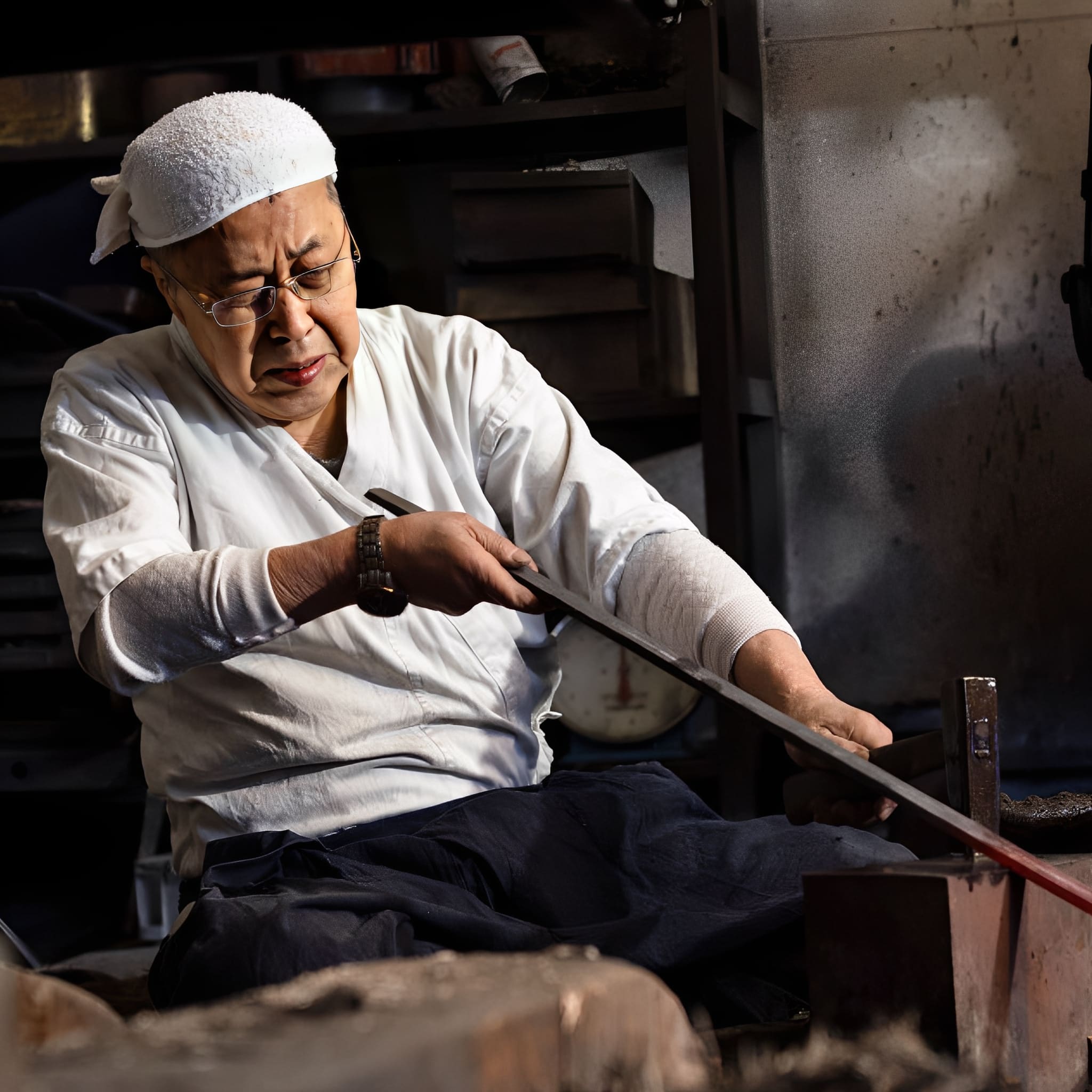
The Art of Traditional Forging
Each katana we craft is born from centuries of samurai tradition.
Our master smiths shape every blade by hand, folding the steel to achieve unmatched strength, flexibility, and beauty.
This time-honored process is not just about creating a weapon? it’s about preserving a legacy of discipline, honor, and artistry.
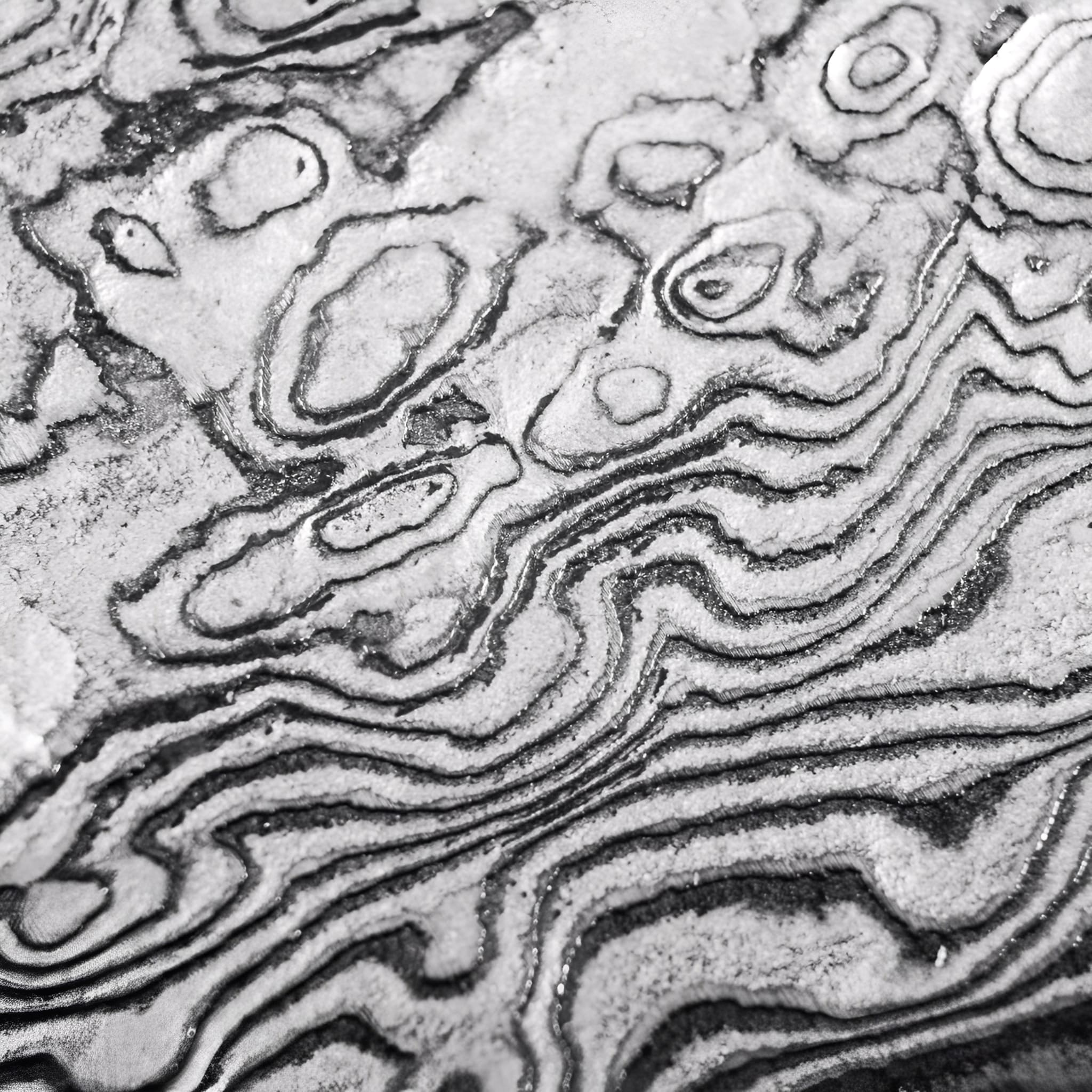
Materials Chosen Without Compromise
We select only the highest-grade steels and authentic fittings to ensure every katana is both a masterpiece and a reliable companion.
From the flawless hamon line to the perfectly balanced tang, each detail is carefully inspected to meet the highest standards of performance and aesthetics.
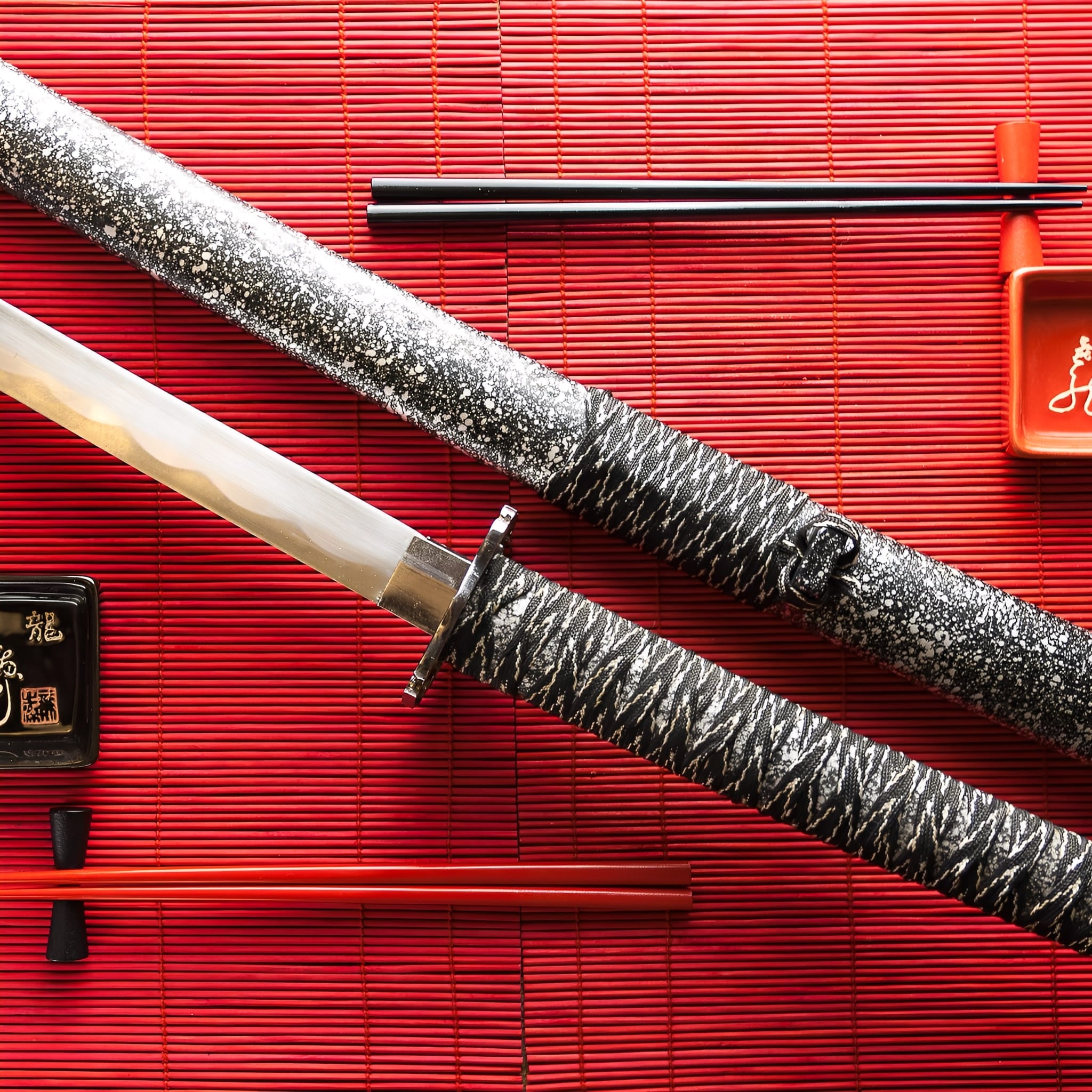
More Than a Sword, A Lifelong Legacy
Owning a handmade katana is an experience that goes beyond the blade itself. It’s holding history, tradition, and craftsmanship in your hands.
Whether displayed as a work of art or wielded with precision, your katana will stand as a symbol of timeless skill and dedication for generations to come.
-
Key Destinations
United States: 5–7 days
Canada: 5–7 days
Australia: 6–9 days
Denmark: 4–6 days
Netherlands: 3–5 days
Sweden: 4–6 days
Switzerland: 3–5 days
Finland: 5–7 days
Singapore: 6–8 days -
Central European Partners
France: 2–3 days
Germany: 3–5 days
Spain: 4–6 days
Italy: 4–6 days
Belgium: 3–5 days
Austria: 4–6 days
Ireland: 4–6 days
Poland: 4–6 days
Portugal: 4–6 days -
Extended EU Network
Czechia: 4–6 days
Hungary: 4–6 days
Slovakia: 4–6 days
Slovenia: 5–7 days
Romania: 5–7 days
Bulgaria: 5–7 days
Croatia: 5–7 days
Serbia: 5–7 days
Estonia: 5–7 days
Latvia: 5–7 days
Lithuania: 5–7 days
Luxembourg: 3–5 days
Greece: 5–8 days -
FAQ’s
Visit our FAQs page to find answers to common questions.